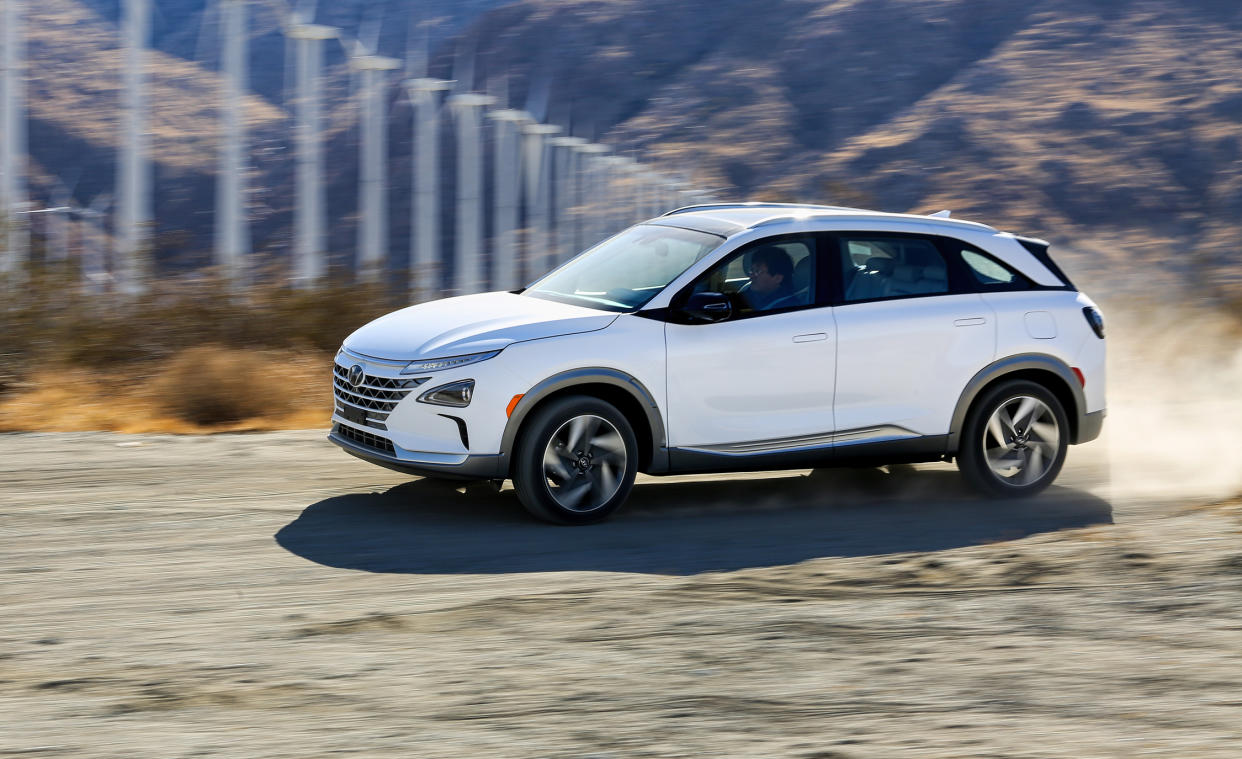2019 Hyundai Nexo: A Bigger, Better Fuel-Cell SUV

Hyundai employed a rather unconventional approach for the rollout of its fuel-cell SUV that will replace the current hydrogen-powered Tucson. The automaker first pulled the curtain off the new vehicle in mid-2017 without revealing full details. Now, during the tech circus known as CES (formerly called the Consumer Electronics Show), the Korean brand has spilled the specifics on the Nexo, which is what the new SUV will be called.
Hyundai’s long-term plan is to introduce 18 production hybrid, electric, or fuel-cell vehicles worldwide by 2025. In the United States, the brand already offers hybrid versions of the Ioniq and Sonata, plus the Ioniq Electric, and has plans for an Ioniq plug-in hybrid as well as an electric version of its upcoming Kona subcompact crossover. With the Nexo, the brand will have its first dedicated fuel-cell platform.

At 183.9 inches long, 73.2 inches wide, and 64.2 inches high, the Nexo is 10.3 inches longer, 1.5 inches wider, and 1.0 inch lower than the Tucson Fuel Cell. Its wheelbase is 5.9 inches longer as well. The battery pack in the Nexo is located in the trunk rather than the floor, where it sits in the Tucson. The Nexo’s fuel-cell stack is smaller than the Tucson’s, but the overall package provides more total energy: a 95-kW fuel cell paired with a 40-kW battery pack versus a 100-kW fuel cell and a 24-kW battery pack. The Nexo is good for an estimated 370 miles of range, a significant improvement over the Tucson’s 265 miles. Once the hydrogen tanks are empty, the Nexo can be refueled in five minutes, according to Hyundai. The issue of finding a hydrogen station remains, however, as the supporting infrastructure is severely limited.

The fuel cell and battery pack work together to feed a 161-hp electric motor that generates 291 lb-ft of torque, up 27 horsepower and 70 lb-ft compared with the Tucson. Nobody is touting fuel-cell vehicles as speed machines, the Nexo included, although its claimed 9.5-second zero-to-60-mph time chops three seconds off the Tucson’s figure. Hyundai pointed out that the new powertrain is smaller and lighter and that all of the moving parts are located in the engine bay to reduce noise in the cabin. The components also have been bolstered to handle temperatures as cold as 20 degrees below zero and as hot as 120 degrees Fahrenheit.
The Nexo boasts other advanced technology as well, including a new blind-spot-monitoring system that uses wide-angle cameras on both sides of the vehicle; it displays the view to the rear and sides on a screen in the center cluster during lane changes. Semi-autonomous features include lane-following assist, which can center the vehicle in a lane at speeds up to 90 mph, and highway-driving assist, which can adjust speeds using mapping information. A remote park-assist feature is available to park and retrieve the car and can be operated with or without a driver on board.
Hyundai has yet to announce pricing. The Nexo will be released only in California, starting later this year.


